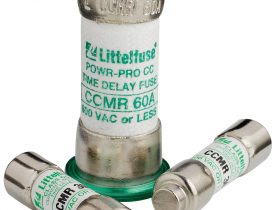Limited-service controllers (LSC) are used as fire pump controllers within defined limits and restricted performance. LSCs are permitted in fire protection applications in instances where cost is a major factor and, if not permissible, would most likely result in the decision not to have any fire pump. They have been used in some nursing homes, day care centers, larger private homes, and similar small premises. LSCs were added to NFPA 20 Standard for the Installation of Stationary Pumps for Fire Protection after a serious fire in Chicago more than 40 years ago where testimony showed that the loss of life could have been lessened had a fire pump been placed in service. Limited-service controllers were designed for these small premises, limited to 600 V, 30-hp maximum and were intended to be used with limited-service pumps. Their use must, on a case-by-case basis, be permitted by the authority having jurisdiction (AHJ).
Paragraph 10.7.1 of NFPA 20 (2003) states “”that the limited service controllers, consisting of automatic controllers for across-the-line starting of squirrel-cage motors of 30 hp or less shall be permitted to be installed where such use is acceptable to the authority having jurisdiction.”” Further, there is an appendix item, paragraph A.10.7, which states: “”The authority having jurisdiction can permit the use of a limited-service controller for special situations where such use is acceptable to said authority.”” In many instances, the AHJ has need for factual information to aid in making his decision, which this article is intended to address.
The designs of the fire pump controller and LSC have changed over the past forty years. For example, fire pump controllers are now available for all horsepower and voltage combinations served by the LSC.
NFPA 20 mandates, among other things, that motor protection provided by fire pump controllers be of the non-thermal type, be immediately re-settable and that it provide short-circuit and locked-rotor protection only (no overload protection). These requirements are tempered for the LSC so that it performs more like a specialized industrial motor controller than a fire pump controller. Motor protection for the LSC is permitted to be of the thermal type that may require cooling time in order to be re-settable. Locked rotor overcurrent protection for the LSC is addressed in paragraph 10.7.2.1 of NFPA 20 (2003)—””the locked rotor overcurrent protection shall be permitted to be achieved by using an inverse time nonadjustable circuit breaker having a standard rating between 150 percent and 250 percent of the motor full-load current.”” This may produce performance considerably different than the desired and required 8–20 seconds locked-rotor current tolerance time before tripping that is unique to fire pump controllers.
Thus, under certain circumstances, the limited-service controller may trip too quickly to adequately start a distressed pump, take too long a time to reset under fire conditions, or protect the motor from damage. AHJs, in making their decisions, must also realize that the LSC does not contain an isolating switch, which is required in fire pump controllers. Thus, if service on the thermal-magnetic circuit breaker is required, loss of fire protection may be prolonged since often the LSC is connected directly to utility power.
NEMA recommends that AHJs consider the above facts in their decisions to permit limited service controllers to provide fire protection.










Find Us on Socials